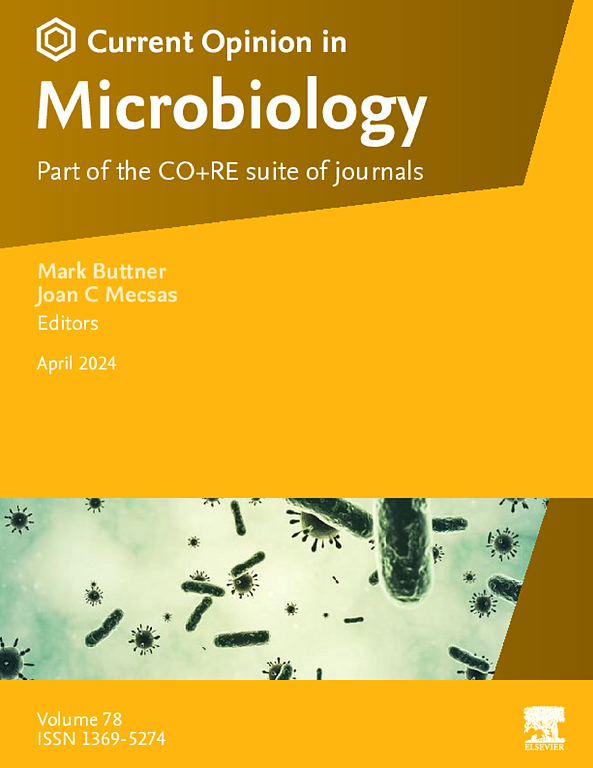Pathogen adaptation to lung metabolites
IF 7.5
2区 生物学
Q1 MICROBIOLOGY
引用次数: 0
Abstract
Opportunistic pathogens like Pseudomonas aeruginosa and Staphylococcus aureus rapidly adapt to the dynamic metabolic landscape of the respiratory mucosa during infection. Host phagocytes recognize these pathogens and trigger metabolic reprogramming, releasing immunometabolites such as succinate and itaconate. P. aeruginosa preferentially consumes succinate as a carbon source to enhance planktonic growth. In response to itaconate-induced membrane stress, it forms protective biofilms, allowing bacterial survival despite host defenses. Additionally, host ketone bodies support microbial communities that are less immunostimulatory and better tolerated by the lung. Similarly, S. aureus responds to itaconate by forming biofilms, aiding colonization in glucose-limited airways. In this milieu, S. aureus consumes proline, linking its survival with the metabolic activity of proline-producing fibroblasts. Here, we will review the competence of both P. aeruginosa and S. aureus to hijack host metabolic pathways, underscoring pathogen metabolic plasticity as an essential strategy to thrive in the human lung.
病原体对肺部代谢物的适应
机会致病菌如铜绿假单胞菌和金黄色葡萄球菌在感染过程中迅速适应呼吸道黏膜的动态代谢景观。宿主吞噬细胞识别这些病原体并触发代谢重编程,释放免疫代谢物如琥珀酸盐和衣康酸盐。铜绿假单胞菌优先消耗琥珀酸盐作为碳源,以促进浮游生物的生长。为了应对itaconate诱导的膜应激,它形成保护性生物膜,允许细菌在宿主防御下存活。此外,宿主酮体支持的微生物群落免疫刺激性较小,肺部耐受性较好。同样,金黄色葡萄球菌对衣康酸的反应是形成生物膜,帮助在葡萄糖受限的气道中定植。在这种环境下,金黄色葡萄球菌消耗脯氨酸,将其生存与产生脯氨酸的成纤维细胞的代谢活性联系起来。在这里,我们将回顾铜绿假单胞菌和金黄色葡萄球菌劫持宿主代谢途径的能力,强调病原体代谢可塑性是人类肺部茁壮成长的重要策略。
本文章由计算机程序翻译,如有差异,请以英文原文为准。
求助全文
约1分钟内获得全文
求助全文
来源期刊

Current opinion in microbiology
生物-微生物学
CiteScore
10.00
自引率
0.00%
发文量
114
审稿时长
6-12 weeks
期刊介绍:
Current Opinion in Microbiology is a systematic review journal that aims to provide specialists with a unique and educational platform to keep up-to-date with the expanding volume of information published in the field of microbiology. It consists of 6 issues per year covering the following 11 sections, each of which is reviewed once a year:
Host-microbe interactions: bacteria
Cell regulation
Environmental microbiology
Host-microbe interactions: fungi/parasites/viruses
Antimicrobials
Microbial systems biology
Growth and development: eukaryotes/prokaryotes
 求助内容:
求助内容: 应助结果提醒方式:
应助结果提醒方式:


